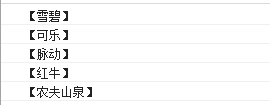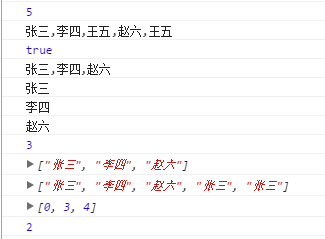您好,登錄后才能下訂單哦!
您好,登錄后才能下訂單哦!
這篇文章主要介紹了JavaScript常用方法和封裝實例分析的相關知識,內容詳細易懂,操作簡單快捷,具有一定借鑒價值,相信大家閱讀完這篇JavaScript常用方法和封裝實例分析文章都會有所收獲,下面我們一起來看看吧。
在各種編程語言中,字符串的format方法是比較常見的,以下通過js擴展的方式,實現了js版本的format方法。目前貌似還沒有瀏覽器支持這一個方法。
if(!String.prototype.format ){
String.prototype.format = function() {
var e = arguments;
return this.replace(/{(\d+)}/g,function(t, n) {
return typeof e[n] != "undefined" ? e[n] : t;
})
};
}例子:
var template = "今天的天氣很{0},大家一起去{1}!";
alert(template.format("晴朗","郊游"));效果:

ie9以上的瀏覽器,以及其他非IE瀏覽器都支持這一方法。
以下是兼容性的擴展寫法:
/**
forEach除了接受一個必須的回調函數參數,還可以接受一個可選的上下文參數(改變回調函數里面的this指向)(第2個參數)。
*/
if (!Array.prototype.forEach && typeof Array.prototype.forEach !== "function") {
Array.prototype.forEach = function(callback, context) {
// 遍歷數組,在每一項上調用回調函數,這里使用原生方法驗證數組。
if (Object.prototype.toString.call(this) === "[object Array]") {
var i,len;
//遍歷該數組所有的元素
for (i = 0, len = this.length; i < len; i++) {
if (typeof callback === "function" && Object.prototype.hasOwnProperty.call(this, i)) {
if (callback.call(context, this[i], i, this) === false) {
break; // or return;
}
}
}
}
};
}例子:
var drinks = ['雪碧','可樂','脈動','紅牛','農夫山泉'];
var context = {
str1 : '【',
str2 : '】'
};
drinks.forEach(function(item){
console.log(this.str1 + item + this.str2);
},context);效果:

這個方法在各大瀏覽器都得到了較好的支持。
ie9以上的瀏覽器,以及其他非IE瀏覽器都支持這一方法。
以下是兼容性的擴展寫法:
//獲取某元素在數組中第一次出現的下標
if (!Array.prototype.indexOf) {
Array.prototype.indexOf = function(searchElement, fromIndex) {
var k;
// 1. Let O be the result of calling ToObject passing
// the this value as the argument.
if (this == null) {
throw new TypeError('"this" is null or not defined');
}
var O = Object(this);
// 2. Let lenValue be the result of calling the Get
// internal method of O with the argument "length".
// 3. Let len be ToUint32(lenValue).
var len = O.length >>> 0;
// 4. If len is 0, return -1.
if (len === 0) {
return -1;
}
// 5. If argument fromIndex was passed let n be
// ToInteger(fromIndex); else let n be 0.
var n = +fromIndex || 0;
if (Math.abs(n) === Infinity) {
n = 0;
}
// 6. If n >= len, return -1.
if (n >= len) {
return -1;
}
// 7. If n >= 0, then Let k be n.
// 8. Else, n<0, Let k be len - abs(n).
// If k is less than 0, then let k be 0.
k = Math.max(n >= 0 ? n : len - Math.abs(n), 0);
// 9. Repeat, while k < len
while (k < len) {
// a. Let Pk be ToString(k).
// This is implicit for LHS operands of the in operator
// b. Let kPresent be the result of calling the
// HasProperty internal method of O with argument Pk.
// This step can be combined with c
// c. If kPresent is true, then
// i. Let elementK be the result of calling the Get
// internal method of O with the argument ToString(k).
// ii. Let same be the result of applying the
// Strict Equality Comparison Algorithm to
// searchElement and elementK.
// iii. If same is true, return k.
if (k in O && O[k] === searchElement) {
return k;
}
k++;
}
return -1;
};
}例子:
var index = drinks.indexOf('雪碧');
alert(index);//0類似的還有lastIndexOf,用于獲取數組中某個元素最后一次出現的位置。如果數組沒有這個元素,則返回-1。
該方法的實現:
//獲取某元素在數組中最后一次出現的下標
if (!Array.prototype.lastIndexOf) {
Array.prototype.lastIndexOf = function(searchElement /*, fromIndex*/) {
'use strict';
if (this === void 0 || this === null) {
throw new TypeError();
}
var n, k,
t = Object(this),
len = t.length >>> 0;
if (len === 0) {
return -1;
}
n = len - 1;
if (arguments.length > 1) {
n = Number(arguments[1]);
if (n != n) {
n = 0;
}
else if (n != 0 && n != (1 / 0) && n != -(1 / 0)) {
n = (n > 0 || -1) * Math.floor(Math.abs(n));
}
}
for (k = n >= 0
? Math.min(n, len - 1)
: len - Math.abs(n); k >= 0; k--) {
if (k in t && t[k] === searchElement) {
return k;
}
}
return -1;
};
}通過這兩個方法,我們可以來做一些有意思的事情了。比如,判斷一個對象是否為數組?
IE9 以上的瀏覽器,已經支持通過Array.isArray()來驗證一個對象是否為數組了。
比如:
var result = Array.isArray([]); alert(typeof []);//object alert(result); //true
那么,如果我們自己來實現,又該如何做呢?下面給出一個簡單思路,
簡單模擬一下這個過程:
//首先,讓我們來看一看數組的構造器是咋樣的?
console.log([].constructor.toString());
/*
打印出來是這樣的:
function Array() { [native code] }
*/于是便有了
var Array = function(){
}
Array.isArray = function(obj){
return obj.constructor.toString().indexOf('Array') != -1;
}
var result = Array.isArray([]);
alert(result); //true雖然取巧了點,不過目的確實達到了。
通過數組的一些基本方法,我們可以開始自己模擬一下java中的ArrayList了
代碼如下:
//模擬ArrayList
function ArrayList(){
var arr = []; //用于保存數據的數組
var length = 0; //數組的長度,默認為0
/**
* 判斷是否為空
*/
this.isEmpty = function(){
return length == 0;
}
/**
* 獲取列表長度
*/
this.size = function(){
return length;
}
/**
* 判斷對象中是否包含給定對象
*/
this.contains = function(obj){
if(arr.indexOf(obj) != -1){
return true;
}
return false;
}
/**
* 新增
*/
this.add = function(obj){
length = length + 1;
arr.push(obj);
}
/**
* 刪除
* 參數1 obj : 需要刪除的元素
* 參數2 deleteAll: 是否全部刪除,否則默認刪除第一個匹配項
*/
this.remove = function(obj,deleteAll){
var len = arr.length;
for(var i = 0 ;i < len ;i++){
if(arr[i] == obj){
arr.splice(i,1);
length = length - 1;
if(!deleteAll){
break;
}
}
}
}
/**
* 根據索引獲取對應的元素
*/
this.get = function(index){
if(index > length - 1){
return null;
}
return arr[index];
}
/**
* 獲取列表數組
*/
this.toArray = function(){
return arr;
}
/**
* 獲取某一個元素的角標
* 如果只出現一次,就返回一個數字,如果大于一次,就返回數組
*/
this.indexOf = function(obj){
var rstArr = [];
var count = 0;
for(var i = 0 ;i < length ;i++){
if(obj == arr[i]){
rstArr[count++] = i;
}
}
if(count == 1){
return rstArr[0];
}
return rstArr;
}
this.toString = function(){
return arr.toString();
}
}
//測試代碼
var list = new ArrayList();
list.add('張三');
list.add('李四');
list.add('王五');
list.add('趙六');
list.add('王五');
console.log(list.size());
console.log(list.toString());
console.log(list.contains('張三'));
list.remove('王五',true); //null,undefined,''
console.log(list.toString());
console.log(list.get(0));
console.log(list.get(1));
console.log(list.get(2));
console.log(list.size());
console.log(list.toArray());
list.add('張三');
list.add('張三');
console.log(list.toArray());
console.log(list.indexOf('張三'));
console.log(list.indexOf('趙六'));運行結果:

關于“JavaScript常用方法和封裝實例分析”這篇文章的內容就介紹到這里,感謝各位的閱讀!相信大家對“JavaScript常用方法和封裝實例分析”知識都有一定的了解,大家如果還想學習更多知識,歡迎關注億速云行業資訊頻道。
免責聲明:本站發布的內容(圖片、視頻和文字)以原創、轉載和分享為主,文章觀點不代表本網站立場,如果涉及侵權請聯系站長郵箱:is@yisu.com進行舉報,并提供相關證據,一經查實,將立刻刪除涉嫌侵權內容。